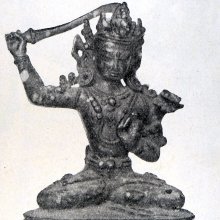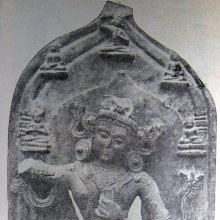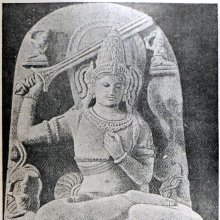Sadyonubhava: 1 definition
Introduction:
Sadyonubhava means something in Buddhism, Pali. If you want to know the exact meaning, history, etymology or English translation of this term then check out the descriptions on this page. Add your comment or reference to a book if you want to contribute to this summary article.
Images (photo gallery)
In Buddhism
Tibetan Buddhism (Vajrayana or tantric Buddhism)
Source: archive.org: The Indian Buddhist IconographySadyonubhava (सद्योनुभव) is another name for Arapacana: one of the various forms of Mañjuśrī having their Sādhana described in the 5th-century Sādhanamālā (a collection of sādhana texts that contain detailed instructions for rituals).—[...] Arapacana is also called Sadyonubhava-Arapacana, or Sadyonubhava-Mañjuśrī.—He is resplendent like the full moon, has a smiling face, is decked in all sorts of princely ornaments, and sits on a double lotus in the Vajraparyaṅka attitude. He brandishes the sword in his right hand, while his left holds the Prajñāpāramitā book against his chest. Jālinīkumāra (or Sūryaprabha) is in front of him, Candraprabha behind, Keśinī to the right and Upakeśinī to the left. All these four divinities are replicas of the principal god.

Tibetan Buddhism includes schools such as Nyingma, Kadampa, Kagyu and Gelug. Their primary canon of literature is divided in two broad categories: The Kangyur, which consists of Buddha’s words, and the Tengyur, which includes commentaries from various sources. Esotericism and tantra techniques (vajrayāna) are collected indepently.
See also (Relevant definitions)
Full-text: Arapacana.
Relevant text
Search found 2 books and stories containing Sadyonubhava; (plurals include: Sadyonubhavas). You can also click to the full overview containing English textual excerpts. Below are direct links for the most relevant articles:
The Indian Buddhist Iconography (by Benoytosh Bhattachacharyya)
Stupas in Orissa (Study) (by Meenakshi Chauley)
Buddha Images < [Chapter 5]



